If you’re thinking about trying a new way to stay fit, save money on gas, avoid wasting time in rush-hour traffic, or just want to explore around your city or town, then you’ve made an excellent choice in deciding to get into biking!
It’s no secret that biking has like a bazillion advantages, but if you’re new to biking or haven’t ridden in a while you might want to know how to prepare for your first bike ride. First and foremost, don’t overthink it, it's just riding a bike. It’s easy to get intimidated by the hardcore cyclists with their fibre-glass state-of-the-art racing bikes and techy accessories, but just remember that they were also beginners at one point.
In any case, today we’re going to discuss the biking essentials of how to prepare for your first bike ride, what to do while riding, and what you need in terms of biking helmet parts and accessories. We’ll also get deep into the many biking benefits for body, just in case you’re having second thoughts.
Without further ado, let's get in gear and get rolling!
What you need to do before riding a bicycle
First off, welcome to the awesome and helpful community of cyclists! As a beginner, you might have a few questions and concerns like what bike frame size do I need? Or what are the best biking iPhone apps? Or generally, what do you need to do before riding a bicycle? Don’t sweat it, we’re here to help you get the pedals turning so you can start your amazing biking adventures!
1. Bike Frame Size Guide
Riding a bike should be a pain-free and relaxing activity, but in order to make that possible, you need to make sure your bike fits your height and reach. Bike frames come in 6 different sizes based on height, but if you want to just dust off the old 10 speed that’s been sitting in the garage or borrow a bike from a friend, then you can simply go by the two tried and true indicators for determining what bike frame size you need:
- When your foot is at the bottom of the pedal stroke, your knee should be slightly bent.
-
The handlebar should be just far enough from the seat so that your torso is at a 45 degree angle when holding it.
If you can meet these two indicators, then the bike frame fits you. You can also refer to this chart if you want a more precise idea about what bike frame size you need:
|
Height |
Bike Size |
|
4’11 to 5’3” (150-160 cm) |
13 to 15 inches |
|
5’3” to 5’7” (160-170 cm) |
15 to 16 inches |
|
5’7” to 5’11” (170-180 cm) |
16 to 17 inches |
|
6’0” to 6’2” (180-188 cm) |
17 to 19 inches |
|
6’2” to 6’4” (188-193 cm) |
19 to 21 inches |
|
6’4” or taller (193 cm+) |
21 inches and up |
2. Pre-Ride Checks
It’s really important to make sure your bike is in good shape before heading out - there’s nothing worse than realizing your tires are flat after riding a few blocks away from home. You can perform these simple checks before riding your bike.
- Check if the tires need air by pinching the sides of the tire with your thumb and index finger. If it has some give, give the tire a quick pump.
- Check if your chain has a thick build-up of grease and dirt or any rust. If it does, you won’t need to deal with it now, but it’s something you should address when you have the time. Always stay on top of your chain situation.
- Adjust the seat so that your knee is slightly bent at the bottom of the pedal cycle and that your torso is at a 45 degree angle when holding the handlebar.
- Check that your brakes have some resistance when you squeeze them and that they aren’t too loose or too tight. Adjust accordingly.
After you perform these checks a few times before riding, it’ll become second nature and you’ll do them without even thinking.

3. Limber Up
If you’re new to biking or intend to bike a long distance, you should consider doing a little biking physical preparation. Biking physical preparation should consist of some basic stretches like leg swings, runner’s lunges, and shoulder reaches. If you’re planning on having a more intense ride, definitely do a warm up that consists of exercises that engage your hips, hamstrings, and back, and also get your heart rate going. Here’s an example of a 3 minute warm up routine you can do before hopping on your bike.
- Leg Swings - 10-20 times each leg
- Runner’s Lunge - 20 seconds each leg
- Shoulder Reaches - 30 seconds
- Butt-Kicks - 30 seconds
- High Knees - 30 seconds
- Active Squat - 30 seconds
4. Set Up Biking Accessories and Apps
In this day in age, there’s an app or an add-on for just about anything and bikes are no exception! Before your next ride, consider checking out these biking iPhone apps and accessories.
- Biking Map App - A good biking map app will help you plan your route, give you traffic updates, and track your rides and progress. We like the popular app Strava because of its intuitive interface, a multitude of features in addition to GPS, such as route tracking, fitness tracking, and a social media feature that lets you share your routes with the community and follow your bike buddies.
- Biking Phone Stand - A phone stand that you can clip onto your handlebars can be a massive game changer for the cyclist, no matter the level. It’s what will allow you to conveniently change a song or podcast, follow a mapped route, or take a phone call. An OMOTON phone stand for biking has everything you could want in a bike phone mount holder with its sturdy and secure design, flexibility, and versatile handlebar compatibility. What’s really awesome about this bike phone mount is its unique Eagle Claw design that holds your phone in place firmly. Rest assured that no matter what kind of terrain you’re riding on, your phone isn’t going anywhere. Another advantage the OMOTON bike phone mount holder offers is that it’s also made of high quality stainless steel and plastic which really puts this bike phone stand above 90% of the other bike phone mounts out there.
- Cycling Helmet - Just a reminder that a helmet is absolutely necessary when riding a bike; however, most countries only enforce this by law for people under the age of 18. That being said, you should still wear one no matter how old you are.
- Hand Pump and Patch Kit - Any cyclist who rides somewhat regularly can tell you that flat tires happen way more often for bikes than they do for cars. I’ve personally been riding my bike to work every day for the past 7 years and experience a flat about 3-4 times each year. I can’t stress enough how key it is to keep a hand pump and patch kit in your backpack or saddle bag so you can deal with this inevitable situation. The good thing about repairing a bike tire is that, unlike a car tire, it’s actually really simple and literally anyone can do it in under 10 minutes. Check out this video tutorial on how to repair a bike tire.
That covers just about everything you need to do before you jump on your bicycle. I can’t stress enough how game changing a phone mount for a bike is. Check out an OMOTON phone stand for your bike if you’re looking to take your bike trips to the next level.

What to do during cycling
Still feeling a bit nervous about riding out into the open road? To set your mind at ease, here are some key points regarding what to do during cycling:
- Follow the biking rules of the road (listed below).
- Be predictable.
- Yield to traffic and pedestrians when appropriate.
- Look before turning.
- Keep an eye out for potholes, debris, and construction.
- Watch out for people exiting parked vehicles.
- Don’t follow cars too closely lest they stop abruptly.
Above all, just try to keep a relaxed yet alert mindset when riding your bike and just enjoy the ride!
Cycling rules of the road that you need to know
One of the best things about biking is the freedom that comes with it. You have access to so many more routes and paths that cars don’t and your pace doesn’t need to be dictated by traffic and other restricting factors. That being said, there are biking rules of the road which you must follow and even though you don’t need a biking license, you still need to be well acquainted with the biking rules of the road to ensure your and others’ safety; after all, the biking rules of the road exist for a reason.
Although cycling traffic laws vary from place to place, there are consistent biking rules of the road that apply almost everywhere:
- Do not ride on the sidewalk.
- Obey traffic control signals and signs.
- Use hand signals and eye contact to communicate your intentions to other drivers.
- Do not weave between parked cars. Ride in a straight line.
- Ride single file when with other cyclists.
- Do not drink and ride.
Biking as a workout
Looking for some assurance that biking on a regular basis is one of the best decisions you could ever make? Aside from being a fun outdoor activity and environmentally friendly mode of transportation, biking evidently helps you stay fit and healthy. Research has shown that biking is a fantastic way to work out; according to the Australian government run betterhealth website, some of the biking benefits for body include:
- Increased cardiovascular fitness.
- Increased muscular strength and flexibility.
- Improved joint mobility.
- Decreased stress levels.
- Improved posture and coordination.
- Strengthened bones.
- Decreased body fat.
- Prevention or management of disease.
- Reduced anxiety and depression.
Biking is great for almost every aspect of physical health and, like most exercise, can even be beneficial to mental health too.
If you are looking for ways to lose weight or just to burn off an indulgent meal, you might be wondering, biking burns how many calories? Well, on average, biking can typically burn between 450 to 750 calories per hour - that’s the equivalent to “burning off” two big macs!
The most obvious advantage that biking has over other forms of exercise that make use of the same muscles and body mechanics is that it doubles as both a workout and a form of transportation. Have you ever wondered why the obesity rate of so many other parts of the world, most notably Asia, is so low and the life expectancy so high? According to the scientific journal, SSM - Population Health, one of the key reasons why obesity rates in South Asia are so low is because a significant portion of the population uses cycling as their primary mode of transportation. About 16% of people in Japan use their bikes to get to work every day, compared to 0.6% in America!
All in all, biking is a top-notch workout as it provides a myriad of physical and mental health benefits which have been demonstrated by countries like Japan to have an enormous positive impact on the overall health of a given population.

So now that you know what you need to do before riding your bike and have confirmation of the incredible health benefits of biking, what’s stopping you? Jump on that bicycle and get pedaling! Hope to see you out there!







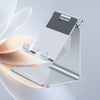

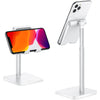
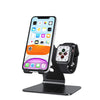
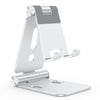

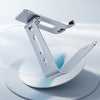

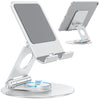
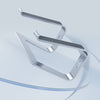
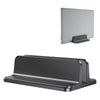
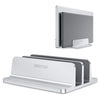
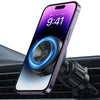
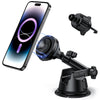
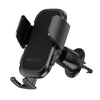
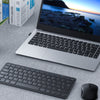
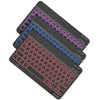


![[iOS System] Seamless KB066](http://omoton.com/cdn/shop/files/B00B24I4II-1_100x.jpg?v=1686815508)
![[Mac System] Seamless KB066](http://omoton.com/cdn/shop/files/B09899K4L6-1_c724630c-c160-4901-9900-f670acc91416_100x.jpg?v=1686732854)
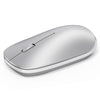
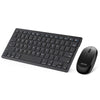
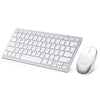
![[2 pcs] Full Protection A020-iPad Pro 11](http://omoton.com/cdn/shop/products/3a69674b6a96497b2ffd7f3025a80d58_e9954f3e-86f5-43e6-9a80-575bcfebd158_100x.jpg?v=1686381536)
![[2 pcs] Full Protection A017 - iPad 10.2 inch](http://omoton.com/cdn/shop/files/61tTSoyyuuL._AC_SL1500_100x.jpg?v=1686021560)
![[3 pcs] Rugged & Robust A013-iPhone 11/XR](http://omoton.com/cdn/shop/files/61po0_qv46L_100x.jpg?v=1686032850)
![[3 pcs] Rugged & Robust A013-iPhone 14](http://omoton.com/cdn/shop/files/16c0b02250912a03578c8b2af6825f11_100x.jpg?v=1686708163)
![[3 pcs] Rugged & Robust A036-iPhone 14 Pro](http://omoton.com/cdn/shop/files/1_2_100x.jpg?v=1686022078)
![[3 pcs] Rugged & Robust A013-iPhone 14 Pro Max](http://omoton.com/cdn/shop/files/1_2_2_100x.jpg?v=1686023071)
![[3 pcs] Rugged & Robust-iPhone 13](http://omoton.com/cdn/shop/files/71HO0AZn0BL_100x.jpg?v=1688522739)
![[3 pcs] Rugged & Robust-iPhone 13 Pro](http://omoton.com/cdn/shop/files/71pE0jfT24L._AC_SX679_100x.jpg?v=1688523892)
![[3 pcs] Rugged & Robust-iPhone 13 Pro Max](http://omoton.com/cdn/shop/files/71c1zssdVHL._AC_SX679_100x.jpg?v=1688527213)
![[3 pcs] Rugged & Robust A024-Samsung Galaxy A14](http://omoton.com/cdn/shop/files/1_2_68d89e60-61af-4cba-9867-9a91941aee01_100x.jpg?v=1686030778)




